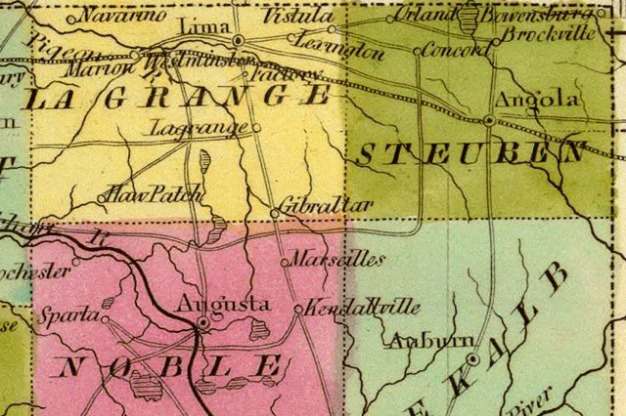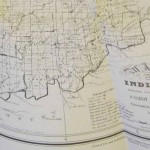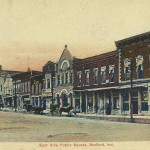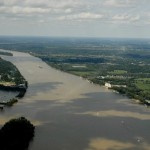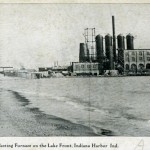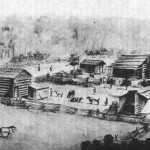Most Indiana towns started as trading or exchange centers for the people of their locality. Consequently, when most Hoosiers lived near the Whitewater, the Ohio, or the lower Wabash, most towns were located in those areas. A number, however, were established along early routes partly to serve travelers, some near the crossing of rivers, others at convenient distances between older and often larger settlements.
By 1830, more than three dozen towns had been established along the Ohio River. Some of these–Madison, New Albany, and Evansville–were the state’s largest cities during much of the nineteenth century. Pioneers also settled on other rivers in the state, of course: Vincennes was a thriving hub along the lower Wabash, and Lafayette, Logansport, Peru, Wabash, and Huntington all grew along the upper Wabash during the 1830s and 1840s, when the Wabash and Erie Canal was under construction.
In addition to transportation and trade, rivers also offered waterpower—a big draw for settlers. Evansville started as a mill site on Pigeon Creek. Smaller waterways and springs, like French Lick, attracted their own populations. Lake Michigan was attractive to settlers as a source of fresh water, a transportation route, and a barrier.
Minerals, especially limestone, lured pioneers to what is now the Bedford-Bloomington area. Reserves of gas, oil, and coal also attracted settlers—and speculators. Several towns and cities saw booms and then busts, as the supplies of oil and gas diminished. Railway towns sprung up, but their fortunes rise and fell with those of the rail lines.
Terre Haute owes its existence to its topography—it sits high above the Wabash, as does Lafayette. Topography also stirred nostalgic feelings in early settlers: for example, “Vevay was established in 1803 by immigrants who were attracted by the resemblance of the area to that of their home town, Vevay, Switzerland.
Source: Stephen S. Visher, “The Location of Indiana Towns and Cities,” Indiana Magazine of History 51, no. 4 (Dec. 1955): 341-346.
A Moment of Indiana History is a production of WFIU Public Radio in partnership with the Indiana Public Broadcasting Stations. Research support comes from Indiana Magazine of History published by the Indiana University Department of History.










